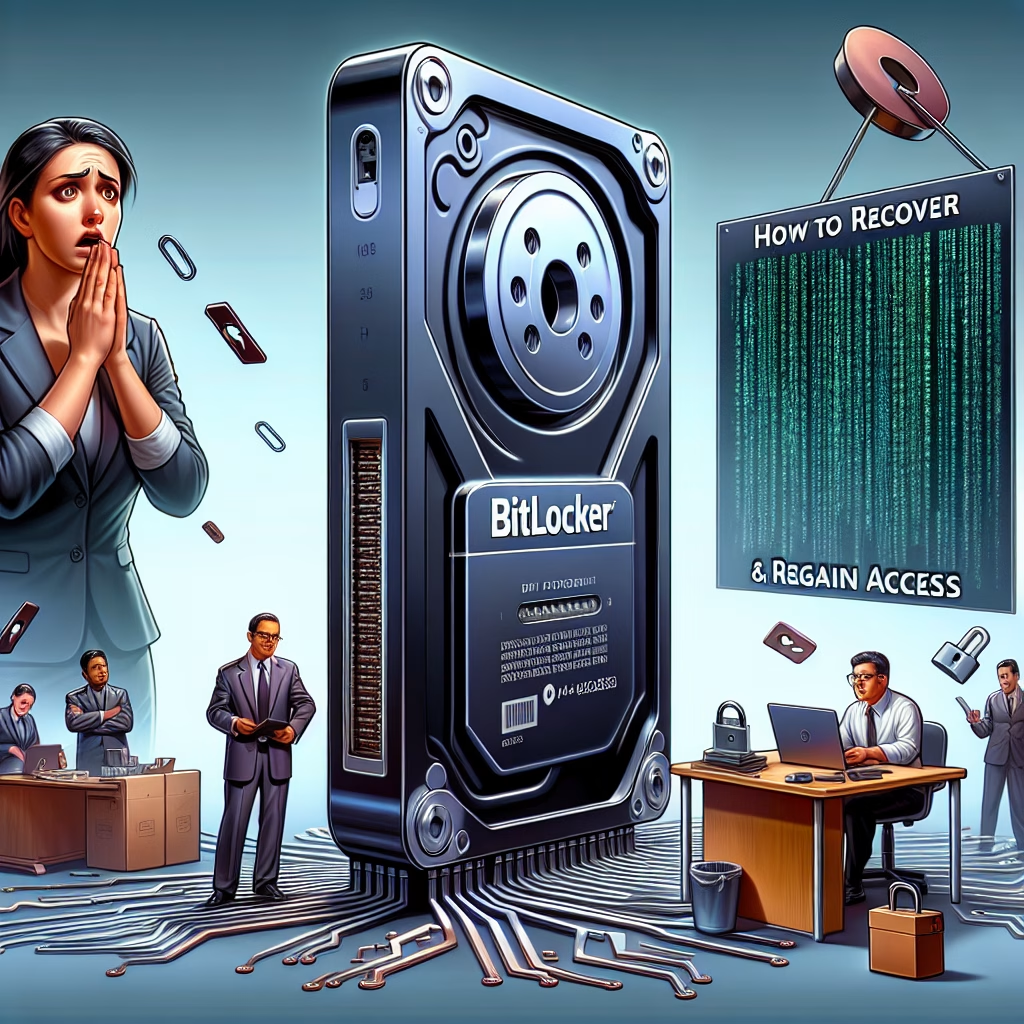What to Do If You Forget Your BitLocker Password
Summary:
Forgetting your BitLocker password can lock you out of your encrypted drive, preventing access to critical data. BitLocker is Microsoft’s full-disk encryption technology designed to secure data by encrypting the entire drive with a password or PIN authentication. Common triggers for this issue include mistyped passwords, BIOS/firmware updates, or hardware changes that affect the Trusted Platform Module (TPM). This guide provides technical solutions for recovering access, including using a recovery key, resetting the TPM, advanced troubleshooting, and data recovery options.
What This Means for You:
- Immediate Impact: If you forget your BitLocker password, you will be unable to access encrypted data unless you have a recovery key or another authentication method.
- Data Accessibility & Security: Ensure you securely store your recovery key in multiple locations (e.g., Microsoft account, USB drive, or printed copy) to prevent permanent data loss.
- System Functionality & Recovery: Password loss may halt system boot processes, requiring recovery tools or administrative intervention.
- Future Outlook & Prevention Warning: Always backup recovery keys and consider using BitLocker in conjunction with a TPM for smoother authentication.
Explained: What to Do If You Forget Your BitLocker Password
Solution 1: Using the Recovery Key
BitLocker generates a unique 48-digit recovery key during encryption setup. If you forget your password, this key can be used to unlock the drive. First, locate it in your Microsoft account (if saved there), a USB drive, or a printed document. To use it:
- Enter an incorrect password multiple times to see the recovery key prompt.
- Select Enter Recovery Key, then type the 48-digit key (split into 8 blocks of 6 digits).
- Once validated, you will regain access and can reset your password via Manage BitLocker in Control Panel.
If you don’t have the recovery key, recovery becomes significantly more difficult, highlighting the importance of keeping it secure.
Solution 2: Resetting the TPM
If BitLocker uses a Trusted Platform Module (TPM) and a hardware change triggers a boot lock, resetting the TPM may help:
- Restart your PC and enter BIOS/UEFI settings (press F2, DEL, or F12 during boot).
- Locate the TPM security settings and clear or reset the TPM.
- Reboot and enter the BitLocker recovery mode to input your recovery key.
Warning: Resetting the TPM may require administrative privileges and can affect other security features.
Solution 3: Advanced Troubleshooting
If standard methods fail, try the following:
Boot from Installation Media: Use a Windows installation USB, select Repair your computer, then Troubleshoot > Command Prompt and run:
powershell
manage-bde -unlock C: -RecoveryPassword [YourRecoveryKey]BitLocker Repair Tools: Use
repair-bdeif the drive is corrupted (requires another encrypted drive for output):
powershell
repair-bde C: D: -RecoveryPassword [YourRecoveryKey] -Force
These methods require technical proficiency and may risk data loss if misused.
Solution 4: Data Recovery Options
If all else fails, professional recovery tools like Elcomsoft Forensic Disk Decryptor may help extract data from locked drives (assuming no further encryption layers exist). Alternatively, restoring from a pre-encryption backup is the safest approach.
People Also Ask About:
- Can BitLocker be bypassed without a recovery key? No, without the recovery key or password, decryption is extremely difficult due to AES encryption standards.
- Where is the BitLocker recovery key stored by default? It may be saved to your Microsoft account, a USB drive, Active Directory (for enterprise systems), or printed.
- Does suspending BitLocker help in recovery? Suspending encryption (via
manage-bde -protectors -disable C:) is temporary and requires administrative access first. - Can you reset a forgotten BitLocker PIN? Yes, via BitLocker Management in Control Panel, but you must authenticate with the recovery key first.
Other Resources:
Suggested Protections:
- Back up your recovery key in multiple secure locations (e.g., cloud, USB, printout).
- Enable TPM + PIN authentication for added security and recovery flexibility.
- Document hardware changes (e.g., motherboard swaps) that may trigger BitLocker lockout.
- Use Active Directory backup (for enterprises) to centrally manage recovery keys.
Expert Opinion:
Forgetting a BitLocker password underscores the critical balance between security and accessibility—encryption is useless if recovery options are mismanaged. Enterprises should enforce strict key backup policies, while individual users must treat recovery keys with the same priority as their passwords. Hardware-based authentication (TPM) reduces risk but is not foolproof.
Related Key Terms:
- BitLocker Recovery Key
- Trusted Platform Module (TPM)
- AES Encryption
- BitLocker Command Line (
manage-bde) - BIOS/UEFI Settings
- Data Recovery Tools
- Active Directory Key Backup
*Featured image sourced by DallE-3





